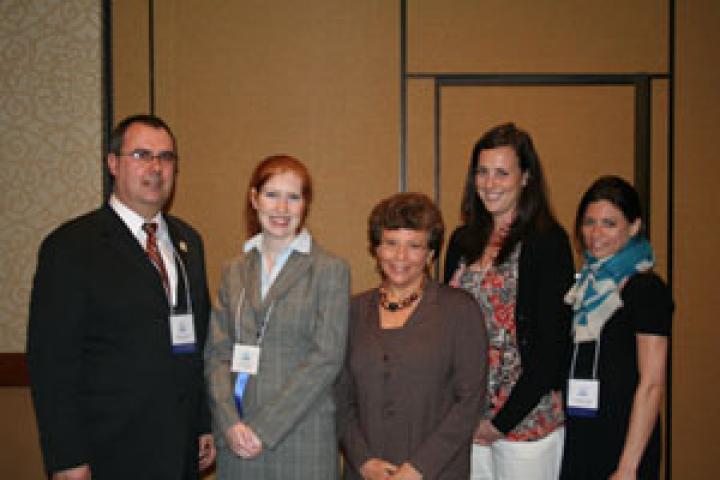Share

The half day conference on "Evidence-Based Practices in the Treatment of Autism" at YAI's International Conference brought together experts in distinct fields to consider how various interventions can be fluidly used in concert with one another.
The need for therapeutic interventions to provide people with autism with the best quality of life, the greatest opportunity for social integration and an ability to express themselves, whether on an emotional level or simply to convey basic needs, was paramount in the conference’s message. Above all, relationship building, with both individuals and their families, was a clear evidence-based indicator for success in each discipline.
The panel's headline speaker, Dr. Rhea Paul, from the Yale Child Study Center, presented the latest speech development research. Dr. Paul offered the preliminary results of a randomized clinical trial that compared the effectiveness of two common speech methods, Applied Behavioral Analysis (ABA) and a more naturalistic approach, in the treatment of non-verbal children on the autism spectrum. While both interventions showed benefit, the discrete trial modality of ABA seems to bring greater outcome for verbal speech, given that children have the requisite skills for motor imitation. The more naturalistic method is a useful intervention to improve overall communication. This indicates that both methods are valuable and can best be used to complement each other, depending upon each child’s developmental readiness.
Dr. Charles Cartwright, Director of the YAI Autism Center, presented on the use of medication to treat the most common psychiatric issues associated with autism spectrum disorders. Dr. Cartwright emphasized the importance of carefully monitoring medication, ensuring that benefits could be optimized and side effects minimized. He focused on addressing underlying anxiety that people on the autism spectrum often have. This is typically seen in the presence of repetitive behaviors, rigidity, ritualism and social avoidance. Dr. Cartwright indicated that medication has shown marked success in treating these anxious behaviors, which often prevent people with autism from developing social relationships, a significant diagnostic component of autism.
Erica Pitman, Project Manager for NYL (New York League for Early Learning) presented on the use of play therapy as a counseling modality to treat autism. There are clinical indications that suggest the use of play therapy assists in addressing anxiety in young children on the spectrum. Among the topics covered were resistance, anxiety surrounding transitions, changes in routine, new environments and the lack of reciprocity in social relationships. Play therapy is also effectively implemented in connection with medication, when necessary, and as a partner to speech and language interventions and therapies. In addition, play therapy has a clear alliance with behavioral and occupational therapies to treat anxiety via the use of desensitization techniques.
The panel was balanced by the presentations of Kristin David, an occupational therapist at the YAI Autism Center, and Carol Schaffler, an expert in the use of augmentative communication devices for people on the autism spectrum. Kristin's presentation also considered the use of occupational therapy to treat behavioral challenges, social interactivity, language delays and sensory processing difficulties.
Carol Schaffler, Chief of Assistive Technology, anchored the conference in her presentation of various augmentative communication devices . Each device varies in its usage depending on the needs of the individual. Some devices are more portable, some programmed for social interaction and some designed to enable an individual to express his or her wants and needs. The devices serve an important need in offering a voice to individuals who cannot vocally express themselves.
